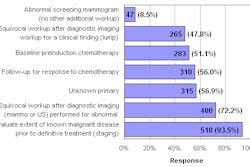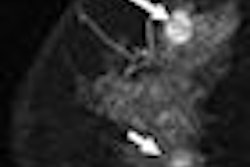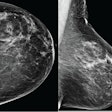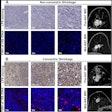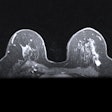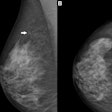It's been shown that women are responsible for more than 80% of healthcare purchasing decisions. These days they're also making decisions for more people in more generations. But women are not only driving the number of healthcare encounters, they're also becoming quite savvy about what they want that care to be, particularly in the arena of breast imaging.
Regular mammography exams are a key factor in breast health, and breast imaging centers can gain market share by expressing a genuine desire to help women stay healthy via their services, offerings, and the professionalism of their staff, according to Bonnie Rush, consultant and president of Breast Imaging Specialists (BIS) of San Diego. Rush spoke at the 2008 American Healthcare Radiology Administrators (AHRA) conference in Denver.
"It's up to us to convince women to use mammography," she said. "Our financial success as breast imaging facilities is a by-product of doing the right thing."
Establish an effective Web site
A breast imaging facility's Web site may be the first contact women will have with the organization. In addition to learning about the facility's services through the Internet, women will also form an impression about the organization that will color their experience for better or worse, Rush said. Make sure the Web site is easily navigable, she advised.
"The fewer clicks to get the desired information and the less effort it takes to complete the site visit tells patients you care about them," she said. "Bad Web site architecture communicates that you don't understand their needs."
A Web site should communicate what the particular facility has to offer regarding specific patient needs, and should send visitors away with valuable information, perhaps in the form of a checklist for breast cancer prevention or information on what to expect during a screening exam.
"You're selling the experience at your center," Rush said. "A bare-bones list of bullets won't do. You want to create copy and illustrations that are so rich they envelop the reader's senses. You're trying to answer the question, 'Why should patients come to you for their care?' "
Patient testimonials that highlight a facility's good work are invaluable, Rush noted.
"Testimonials help create an emotional link between a facility and their potential patients," she said. "They allow the prospects to put themselves into the story and imagine the benefit of using your services for their own successful outcome."
Emphasize options and add value
Rush described how the Elizabeth Wende Breast Clinic in Rochester, NY, personalizes a woman's choices for screening mammograms: patients can take an hour, have their screening exam, and leave (these appointments can often be scheduled within a day); or they can stay longer and get their results the same day (these appointments require two to three months' advance notice).
An example of a value-added service would be a breast cancer risk assessment that can be done via phone by a healthcare concierge at the facility, or made available online with a follow-up to review the results, as this allows for a personal interaction with the patient, Rush suggested.
Providing women with other health resources available at the facility in addition to breast care, such as information about and care for reproductive health, osteoporosis, and menopause, helps create a positive impression of focusing on women's health beyond mammography.
Throw a party
Offer an open house or a health fair, Rush suggested, and get the word out about it through the following:
- Direct mail that looks like an invitation
- A billboard along a commute path
- Posters in businesses
- Churches
- Local news stations
- Community organizations
During the event, offer information on a variety of topics in addition to breast exams, such as:
- Skin cancer screenings
- Foot screenings
- Blood pressure screenings
- Body fat assessments
- Chair massage
- Cholesterol screenings
- Osteoporosis screenings
Afterward, with the women's permission, consider adding testimonials of success stories to the facility's Web site or literature that resulted from the health fair -- for example, if a woman was screened for osteoporosis or was found to have a breast mass, how the facility provided the treatment and the positive outcome. Maximize these successes by spreading the word throughout the community through local news media contacts.
Focus on face-to-face
The price of services is not the ultimate driver, Rush emphasized. Women will assess the value of a facility's offerings in light of the service experience and the comfort of the environment. So pay attention to the "small stuff" such as the waiting area, she said. The more a woman feels she's not in a medical environment, the more inclined she'll be to become a loyal user of the facility's services.
Rush recommended considering the following for the waiting area:
- Cleanliness (get rid of those stained, ripped chairs!)
- Inviting decor, with real plants, soothing paint colors, serene pictures, fish tanks
- Soothing sounds, such as soft music
- Refreshments (noncaffeinated to reduce anxiety)
- Comfortable furniture
- Fresh and timely reading material
- Aromatherapy
Points of contact
Schedulers are a woman's initial contact with the facility, Rush said. It's important that they understand the psychosocial concerns of breast cancer and the impact incorrect or inefficient scheduling can have. A calm voice, an ability to gently elicit personal information, and lots of patience can work wonders, but this requires training, scripting, and modeling, she said.
Once a woman is at the center, a welcoming smile from reception staff will continue the positive impression. If there is a delay with an exam, notifying the patient and offering options such as rescheduling or calling her cell phone when the technologist is available can greatly increase the patient's confidence that the center values her.
Finally, more women will use a breast imaging center's services if those services are convenient and accessible. Taking a survey in the center's market area to determine what hours of operation would best fit the community can be helpful.
Make the mammogram softer, physically and psychologically
Essential for a quality mammography experience is the technologist's manner: acknowledging the patient and asking how she would like to be addressed, and introducing herself and adding, "I will be taking care of you today," Rush said. Explaining the exam, along with the reason for and value of compression, addressing the length of the exam, and asking the woman if she has any further questions or concerns helps, too. The technologist should also discuss the potential for a woman being called back if more images are needed, and explain that this doesn't necessarily mean she has cancer.
Another tool shown to decrease anxiety about discomfort from compression is to use a breast pad or cushion, according to Rush.
Don't forget the reminder
Finally, put a reminder system in place to draw women back again for their annual exam, Rush said. Many women don't return simply because they're not given effective reminders to make and keep appointments. Sending a reminder card and calling have both been shown to be effective, or consider using computer telephony integration (which does not require special equipment, software, or phone lines, just Internet access).
A single reminder may not be effective with a center's population base, so it is important to audit this tool and determine whether a second reminder will prompt an increase in compliance, Rush added.
The ideal result
The ideal, Rush said, is quality breast care and services that exceed community standards, surpass patient expectations, and are provided in a convenient, accessible, and caring manner. And the more a breast imaging facility works toward this goal, the more often enthusiastic word-of-mouth referrals will be generated, leading to a center's clients becoming the least expensive and most effective marketing tool in its arsenal.
"Women of any age and culture appreciate a compassionate and sensitive encounter with professionals," Rush said. "And, ultimately, what they trust most is not advertising, but what other women say about the experience they had at a breast imaging facility."
By Kate Madden Yee
AuntMinnie.com staff writer
August 21, 2008
Related Reading
FFDM reimbursement: Money still matters, May 23, 2008
Breast MR centers must look beyond imaging and offer universal care, November 2, 2007
ACR's withdrawal from NAPBC draws mixed response, August 30, 2007
Copyright © 2008 AuntMinnie.com







